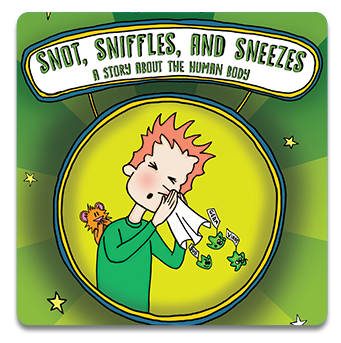With all the concern with RSV and coronavirus, the common cold has taken a backseat. And yet, as you read this, about five percent of us have a cold. Up to a billion colds a year occur in the U.S. alone, causing about 60 million lost days of school and 50 million lost days of work—adding up to $25 billion in lost productivity. To make up for it, Americans spend around $5 billion on over-the-counter remedies. Here are some cold stats:
- Colds are the leading cause of visits to the doctor: Antibiotics are prescribed for more than 60 percent of common colds, despite the fact that bacteria are involved in only two percent.
- A single cold virus can have 16 million offspring within 24 hours.
- The velocity of a sneeze is about as fast as a professional baseball pitcher can throw a fastball – about 100 miles (150 km) per hour.
- The longest sneezing bout ever recorded is that of 12-year-old UK schoolgirl Donna Griffiths, who started sneezing on January 13, 1981, and sneezed for 978 days.
You’ve also probably believed some of these myths about the common cold. They aren’t true so let’s put them to bed!
- Being cold causes a cold. Perhaps the most widespread cold myth suggests that exposure to cold temperatures causes people to catch colds. This is probably because colds are much more common in the winter, and cold air often causes a runny nose.
- Make the most of it. Some people believe that treating cold symptoms is bad for you because they help you recover. But research has shown that about a quarter of people who catch a cold don’t have any symptoms, and beat the virus just as easily. Furthermore, sneezing and runny noses do not eliminate the virus completely, as it is still reproducing in the cells of the nasal lining. In addition, the more you treat your symptoms, the less likely you are to spread your cold.
- Feed a cold and starve a fever (or vice versa). The origins of this saying are unclear. In any case, it probably is not a good idea. Eating well supports your immune system, and you need more fluids than usual when you have a cold if you want to avoid dehydration.
- Antibiotics cure the common cold. As noted above, antibiotics usually do not help a cold. Antibiotics work against bacteria, while most colds are viral. The overprescription of unwarranted antibiotics has caused our bodies to develop antibiotic-resistant bacteria. They may actually make colds worse by killing the ‘friendly’ bacteria and creating an environment more hospitable to the virus.
- Coronavirus is just like a cold. Both COVID-19 and the common cold are caused by viruses. COVID-19 is caused by SARS-CoV-2, while the common cold is most often caused by rhinoviruses. These viruses spread in similar ways and cause many of the same signs and symptoms. A couple of differences would be significant fever with COVID. People are having more fever a day or two, and obviously, if you get significant lung symptoms, bad coughing for a long period of time, any kind of shortness of breath, those things are uncommon with the common cold. Regardless, if you do come down with cold symptoms, runny nose, sore throat, cough, you need to investigate if it could be COVID.
There is, however, one cold myth that contains a grain of truth: Eat chicken soup. A recent study concluded that chicken soup helps the body clear mucus from the bronchial tubes faster and more effectively than other liquids. It does so because inhaling its warm vapors raises the temperature of the nose and loosens thickened secretions. According to the researchers, the active ingredients in traditional recipes also includes celery, onions, carrots, parsley, mushrooms, parsnips, sage, thyme, salt, and pepper. These are known for their medicinal and antioxidant properties.
Want to know more? Read our Fuddlebrook story, Snot, Sniffles, and Sneezes. Than watch our short video which conveys how quickly germs can spread and why handwashing is so important!
